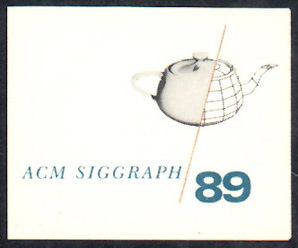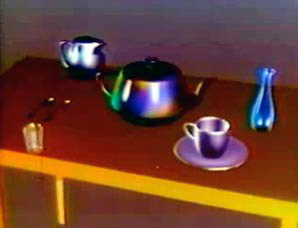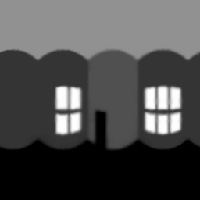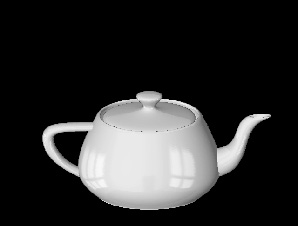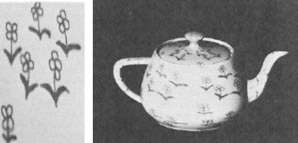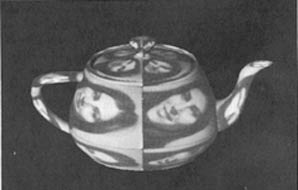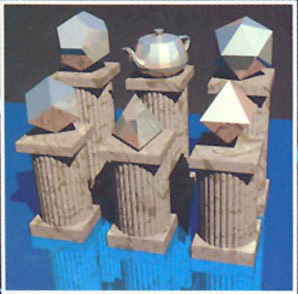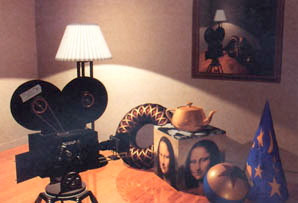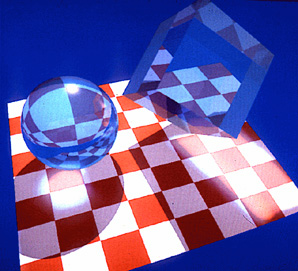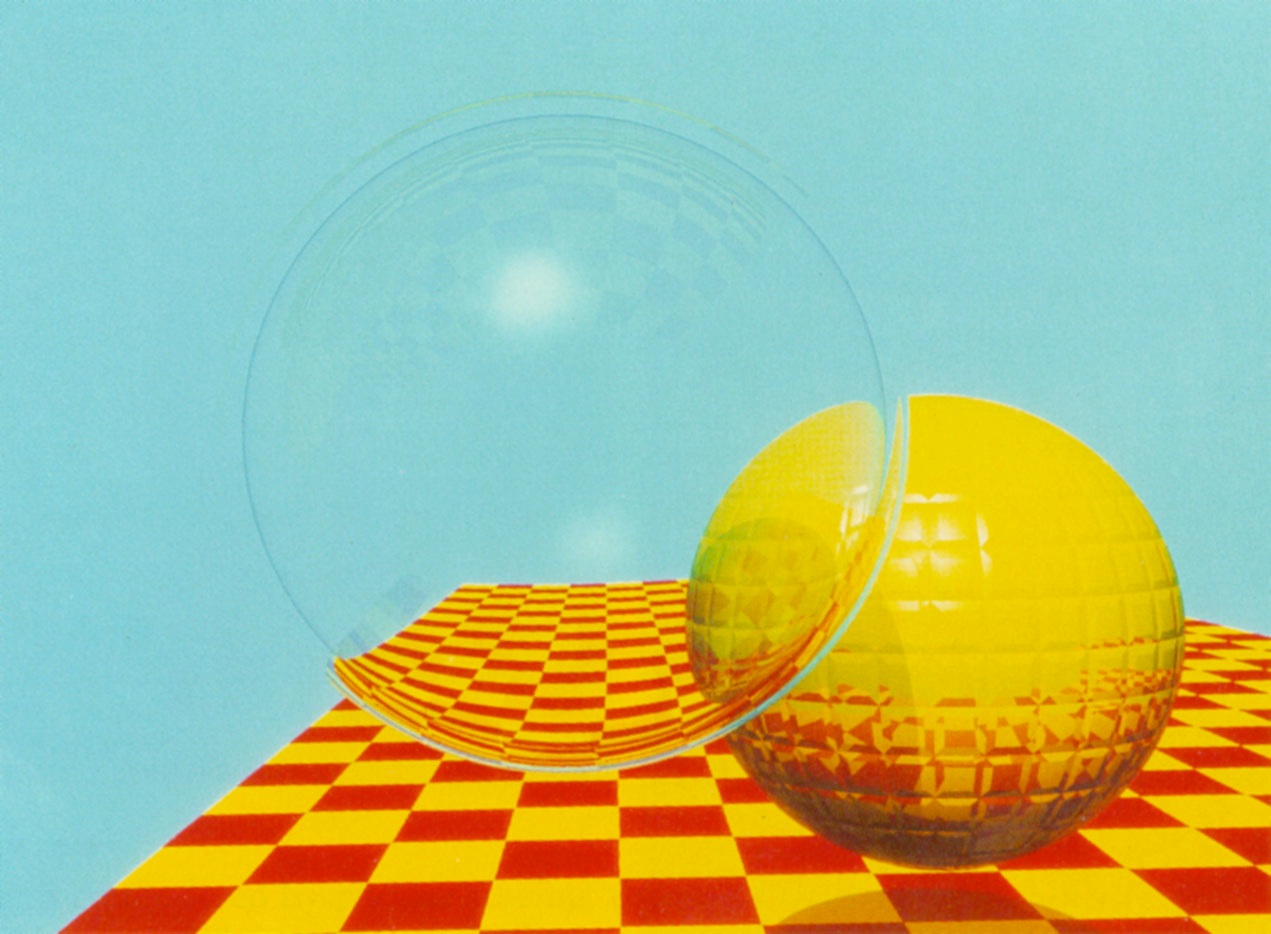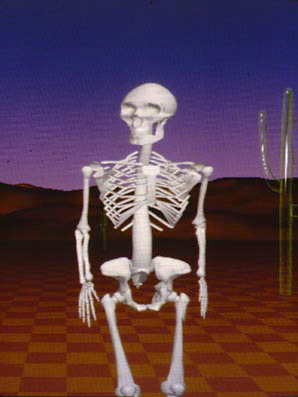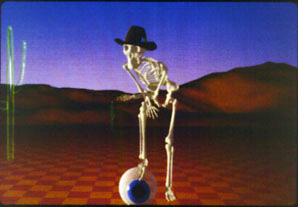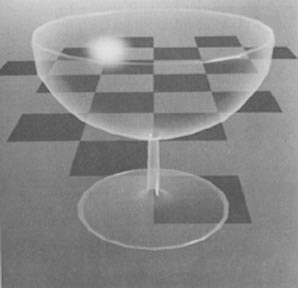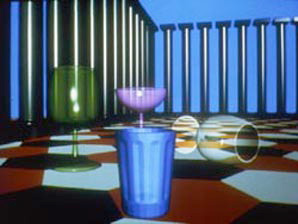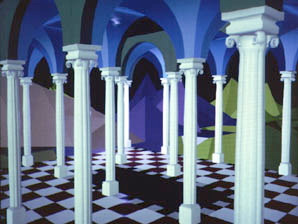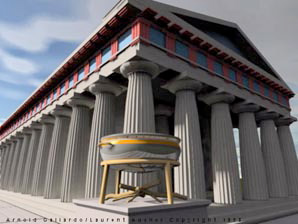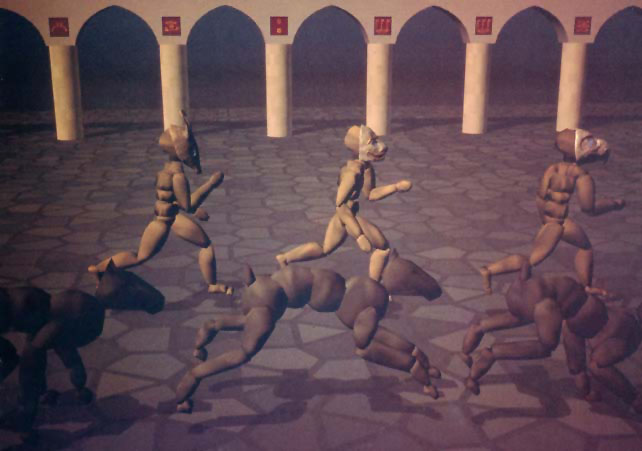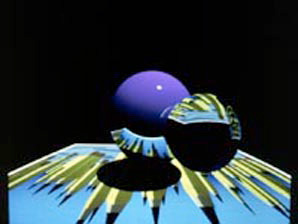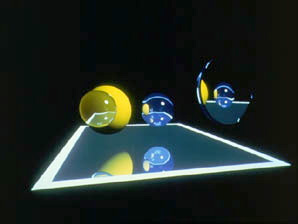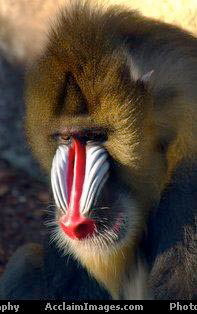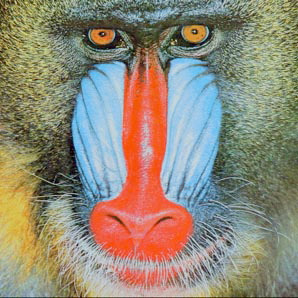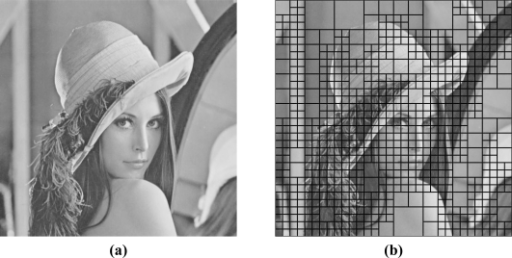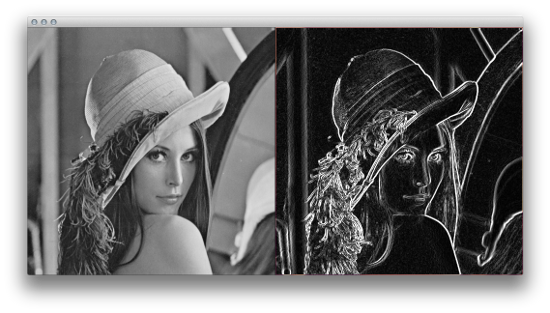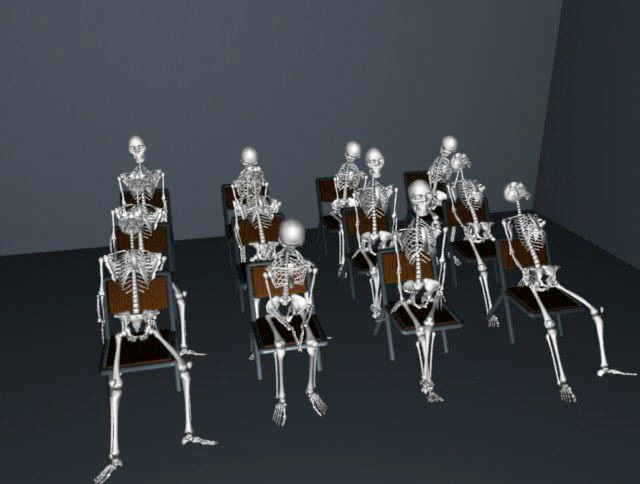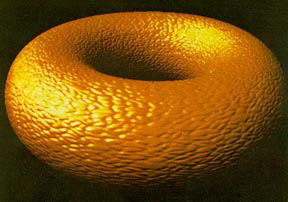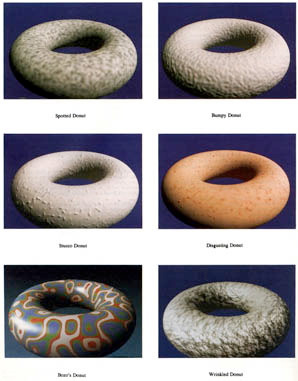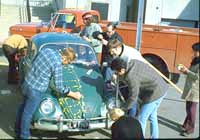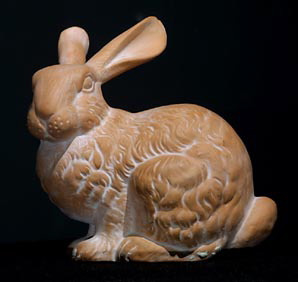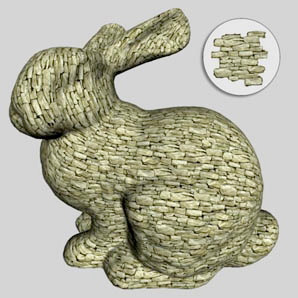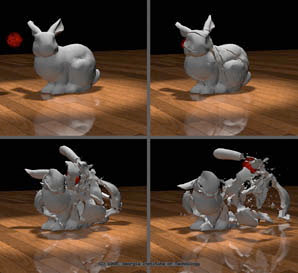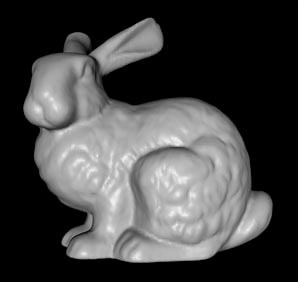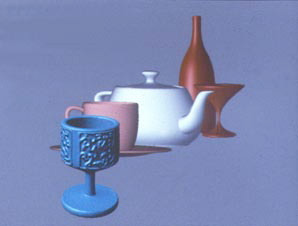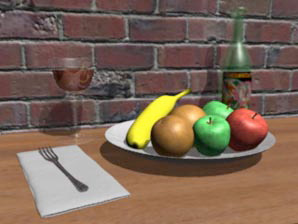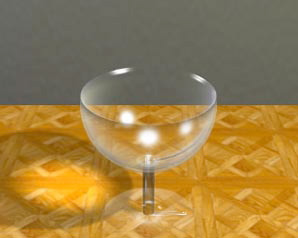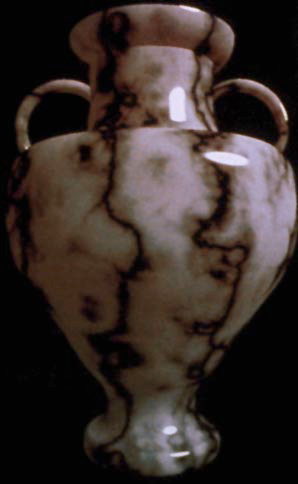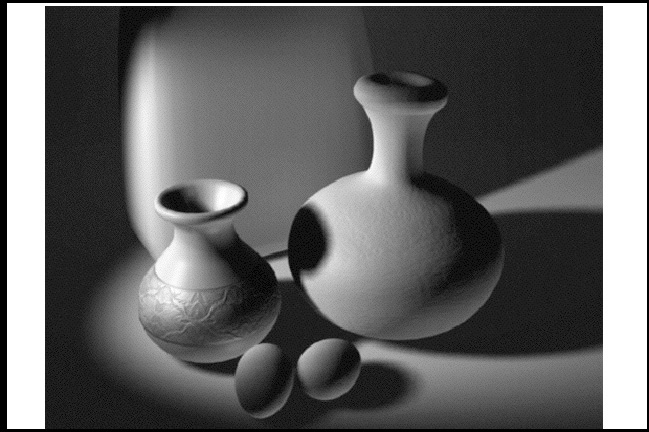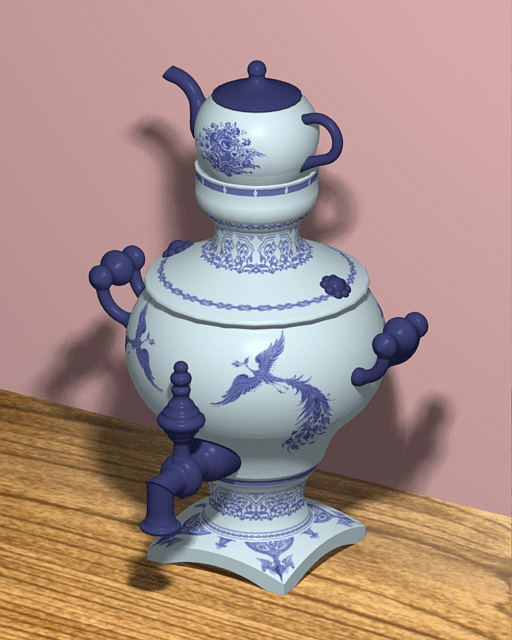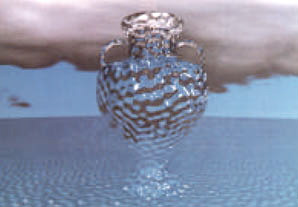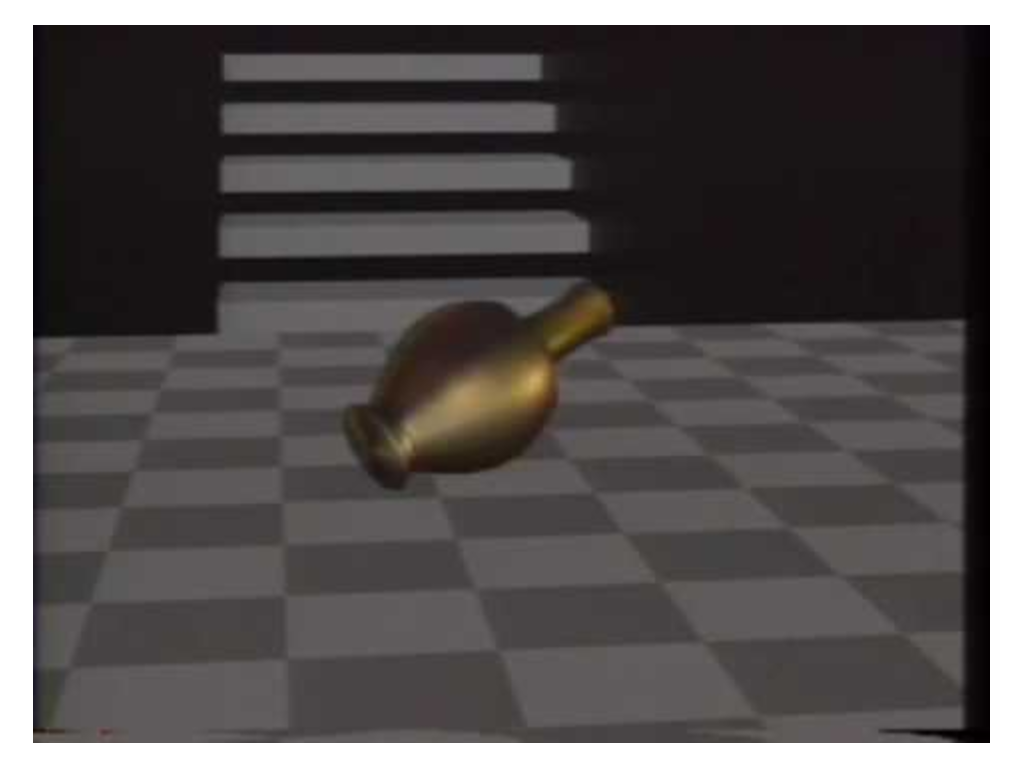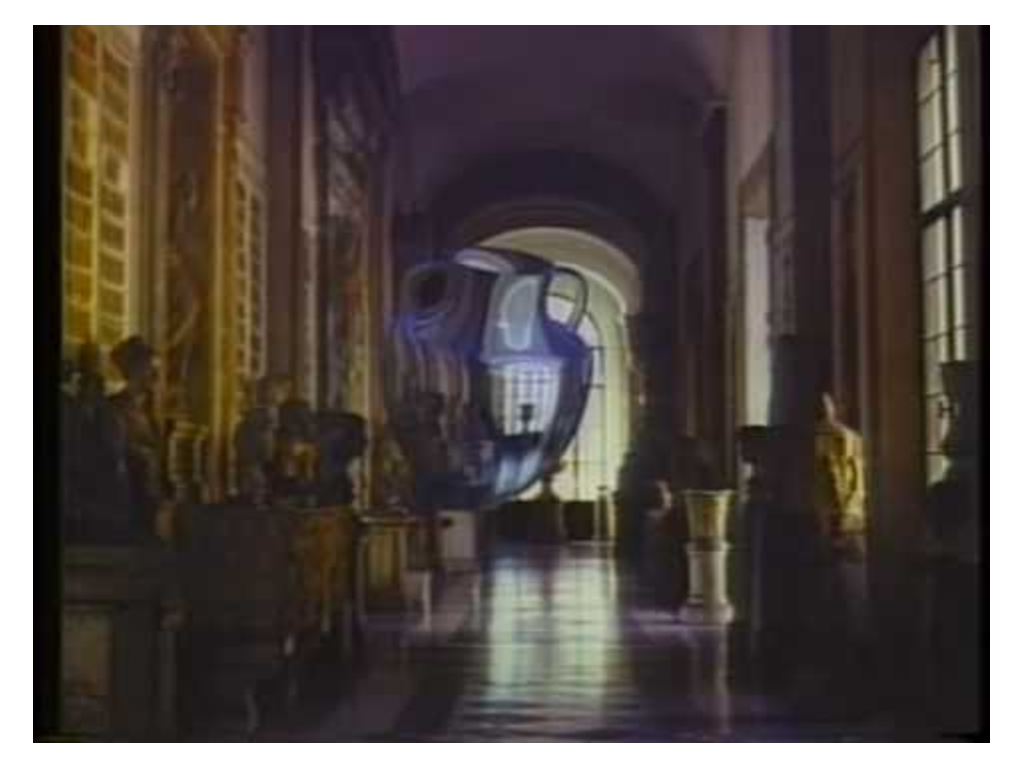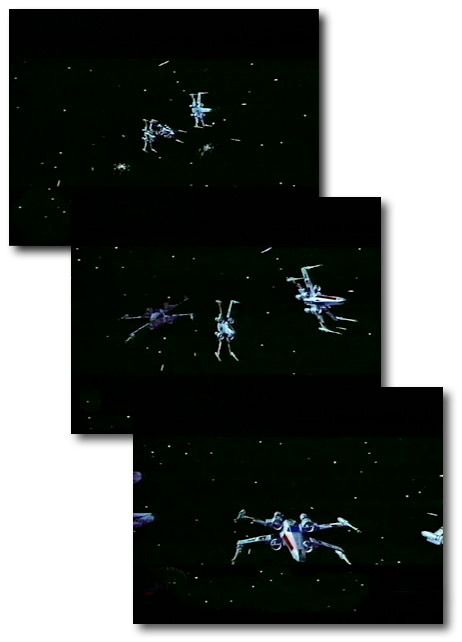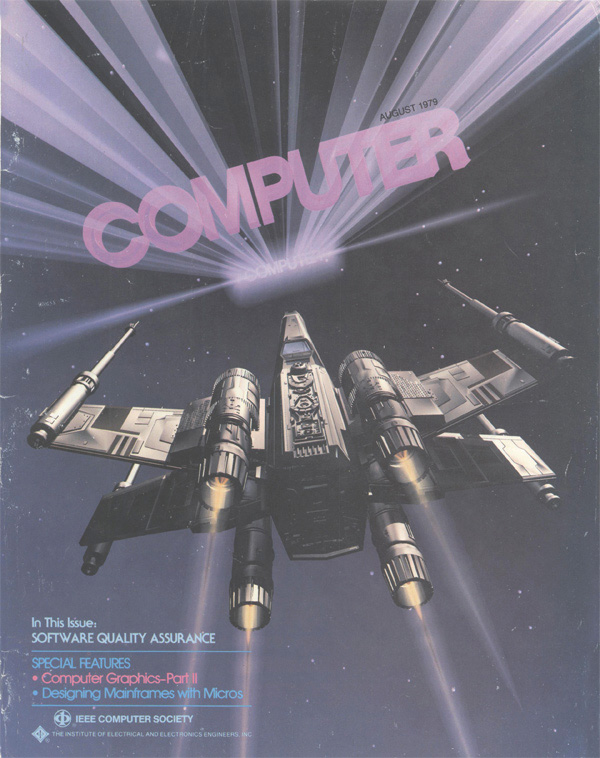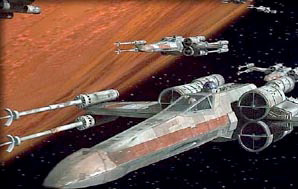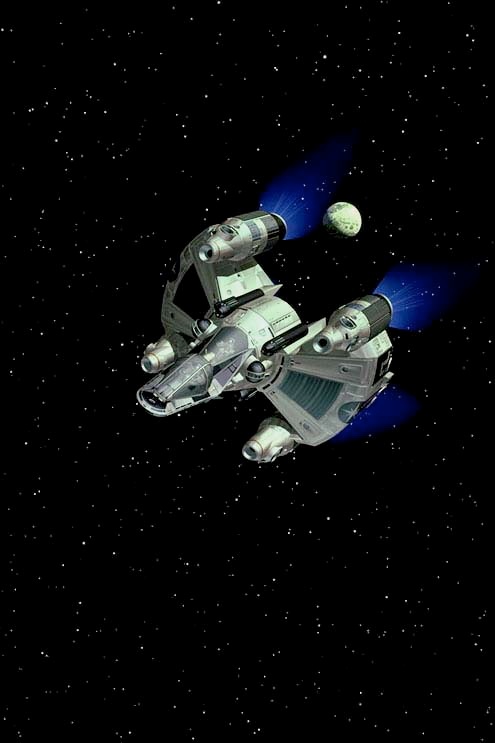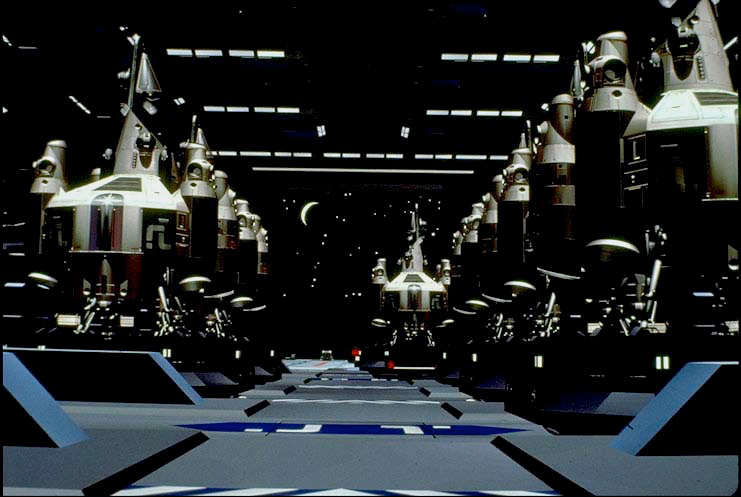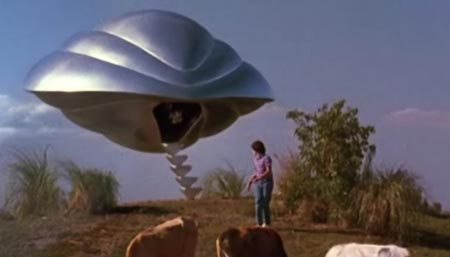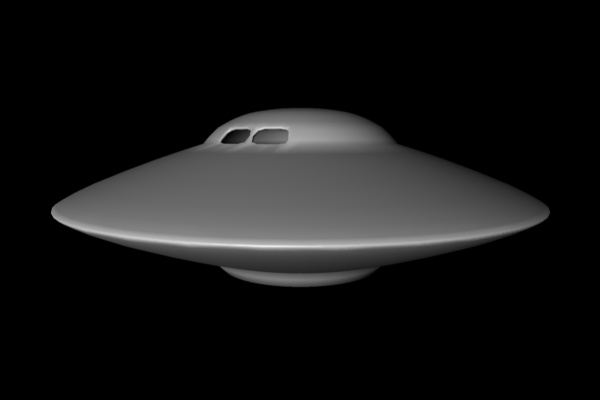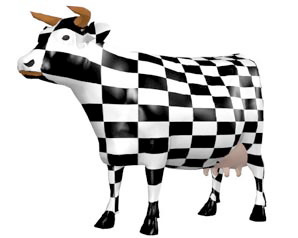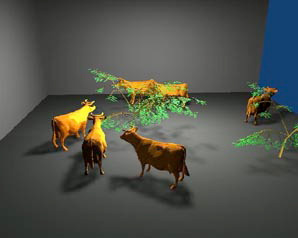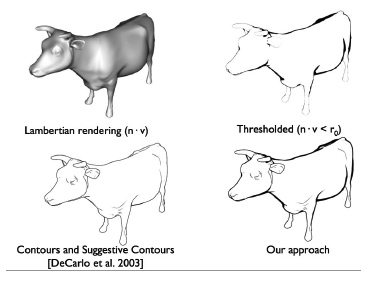Chapter 20: CG Icons
20.1 CG Icons

The Teapot
The Utah teapot is a 3D model which has become a standard reference object in the computer graphics community. It is a simple, round, partially concave mathematical model of an ordinary teapot.
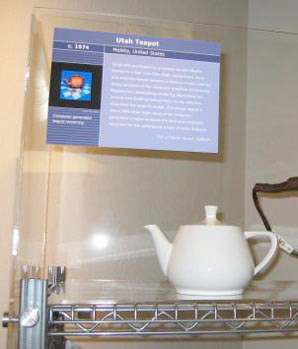
The teapot data was created in 1975 by early computer graphics researcher Martin Newell, a member of the pioneering graphics program at the University of Utah. Newell needed a moderately simple mathematical model of a familiar object for his work, and his wife’s teapot (a Melitta) provided a convenient solution. The shape contains a number of elements that make it ideal for the graphics experiments of the time – it’s round, contains saddle-points, has a concave element (the hole in the handle), and looks reasonable when displayed without a complex surface texture.
Newell made the mathematical data which describes the teapot’s geometry (largely a set of three-dimensional coordinates) publicly available, and soon other researchers began to use the same data for their computer graphics experiments. These researchers needed something with roughly the same characteristics that
Newell had, and using the teapot data meant they didn’t have to laboriously enter geometric data for some other object. Although technical progress meant that the simple act of rendering the teapot was no longer the challenge it was in 1975, the teapot continued to be used as a reference object for increasingly advanced graphics techniques. The common (rather squat) appearance of the teapot differs from the Melita original, reportedly because Newell’s colleague Jim Blinn transformed it to compensate for the non-square pixels on his early frame buffer.
As the most common of the graphics icons, it was featured at the SIGGRAPH 89 conference in a “Call for Teapots” as part of the “Call for Participation”.
- Scene from cover of Conference Proceedings
- Image from a video by Frank Crow to demonstrate capabilities of III software
- Texture maps and reflection maps from Ed Catmull’s dissertation
- Ray-traced image by Arvo and Kirk – The Six Platonic Solids
- Pixar’s Shutterbug series
Checkerboard floors and architectural columns
Two common elements of early computer generated images were the checkerboard floor plane and the column. The checkerboard was a good indicator of the perspective foreshortening effect, and also provided interesting visual effects in transparent and refractive surfaces. The column was an easy data set to create, usually being a regular surface of revolution. It provided a sense of depth and scale to the early images.
- Turner Whitted – Bell Labs
- Turner Whitted – Bell Labs
- “George in the Desert”
- “George in the Desert” – data created by Don Stredney on DG2
- Phong shading with transparency
- Frank Crow
- Wayne Carlson and Rick Balabuck - Ohio State University
- Ray-traced image by Arvo and Kirk – The Six Platonic Solids
- Arnold Gallardo, author of 3D Lighting: History, Concepts, and Techniques
- Eurhythmy
The ray-traced sphere
From the time that Turner Whitted demonstrated his now famous ray traced image, the sphere (solid, opaque, transparent, colored, etc.) has played a major role in the ray traced image. It is easy to create, it demonstrates nice effects with refraction and reflection, but most importantly the intersection computation between the cast rays and the spherical surface are relatively easy to compute in this otherwise compute intensive process.
- Turner Whitted – Bell Labs
- Turner Whitted – Bell Labs
- Hsuen Chung Ho – C/CP
- Bob Conley – C/CP
-
Political Agenda
1999
Unix environment and AL
Cibachrome
122 x 165 cm (48 x 65 in.)
Collection of the Ohio
Supercomputer Center
The Mandrill
Image processing and computer graphics have been linked for many years by many similar issues, theories and algorithms. They are also linked by the common usage of the image of the Mandrill, an ape with a distinctive colorful face. The image is very good for image compression, enhancement, an processing tests, and has been used very frequently as a texture map or background image for CGI purposes.
- Indrinil Chakravarty and Michael Potmesil
Lena
The Lena image has been used for many years in graphics and for image processing tests. The original Lena image was a photograph of a Swedish woman named Lena Sjooblom, who originally was the centerfold in the November 1972 issue of Playboy Magazine. (In English, Lena is sometimes spelled Lenna, to encourage proper pronunciation.) The image was later digitized at the University of Southern California as one of many possible images for use by the imaging research community. The Lena image became a standard in the industry because the image contains a good mixture of detail, flat regions, shading, and texture that are important for testing various image processing algorithms.
- Image transformation
- Quadtree decomposition
- Edge detection
The skeleton
Because of the complexity of the structure of the human skeleton, it became a common model to demonstrate the capabilities of evolving 3D modeling systems. Animators, once they had the model, liked creating sequences in which the skeleton performed activities such as a real human form would participate in, such as dancing, singing, running, etc. This model, nicknamed “George” was created with Wayne Carlson’s DG2 system at Ohio State by medical illustrator Don Stredney. It was placed in an ftp site, and was downloaded hundreds of times.
- “George in the Desert”
- “George in the Desert” – data created by Don Stredney on DG2
- Scene composite from Zeltzer SAS system
- Class time
The “donut”
The kind of geometry that the donut represents, the torus, provided challenges to early renderers and algorithms for such things as texture mapping because of the hole in it. Techniques were thus tested on the donut as a complex proof of concept.
- Rob Rosenblum’s Hairy Donots – Ohio State University
- Jim Blinn’s Bump Mapping
- Perlin Noise Functions
- Pixar’s Shutterbug series
The VW bug
In order to get interesting data bases to use in the imaging experiments taking place at the University of Utah in the late 70s, Ivan Sutherland volunteered his Volkswagen bug to be digitized. Faculty and students taped off a grid of polygons and took measurements, resulting in a polygonal shell of a VW.
- Digitizing Sutherland’s Bug
- University of Utah
- Shading – University of Utah
The Stanford bunny
The Stanford Bunny model was originally constructed in 1994 by Greg Turk and Marc Levoy using a technique they developed to create polygonal models from range scans (Zippered Polygon Meshes from Range Images, Greg Turk and Marc Levoy, SIGGRAPH 94, pp. 311-318). The Bunny model consisted of 69,451 triangles. The model was created using a technique to create polygonal models from several range scans.
A range scan is a grid of distance values that tell how far the points on a physical object is from the device that creates the scans (usually known as a range scanner). One way to think of a range scan is as a 2D image of pixels, but in which each pixel contains a distance value instead of a color. In fact, one common way to examine a range image is to draw it as a black-and-white image, with shorter distances shown as bright pixels and farther distances being darker. It is usually necessary to piece together several range scans in order to capture the full geometry of an object. Because of the interesting geometry, researchers have used the bunny for everything from texture mapping tests, to
growing hair on it, to algorithmically breaking it into pieces.
The Bunny has it’s own website at http://www.cc.gatech.edu/~turk/bunny/bunny.html.
- James O’Brien and Jessica Hodgins, Animating Fracture, CACM 7/2000
- Range-scanned Bunny
The wineglass and vase
The wineglass and the vase were popular test models, because they were easy to generate the geometry (eg, a simple regular surface of revolution) and they had attributes that could demonstrate visible/hidden surfaces and rendering techniques, such as transparency, refractivity, caustics, etc.
- Images from Jim Blinn, University of Utah
- Phong shading with transparency
- Jim Blinn, University of Utah
- Alias Maya tutorial
- Blender tutorial
- CG image of a samovar vase created at Cornell PCG.
- Perlin Noise Functions
- James Hahn
- Hsuen Chung Ho
The X-Wing fighter, Starfighters, and other space ships
Because of their use in motion pictures such as The Last Starfighter and Star Wars, many early film tests that utilized CGI used space fighters such as the x-wing fighter and the gunstar as models.
- X-wing fighter from The Last Starfighter
- Cover of the August, 1979 IEEE Computer Magazine. Gary Demos produced this X-wing fighter image to convince George Lucas that CG could be used to make images for Star Wars.
- X-Wing Fighter
- Scene from The Last Starfighter
- Flight of the Navigator
- Autodesk
The Cow
One of the many classic data sets from the Viewpoint Data Labs portfolio, the cow has achieved status as a CG icon, appearing in many demonstrations and exemplary images. It is a complex surface that has a recognizable quality, and has most often appeared out of context in environments that are not usual cow playgrounds.
